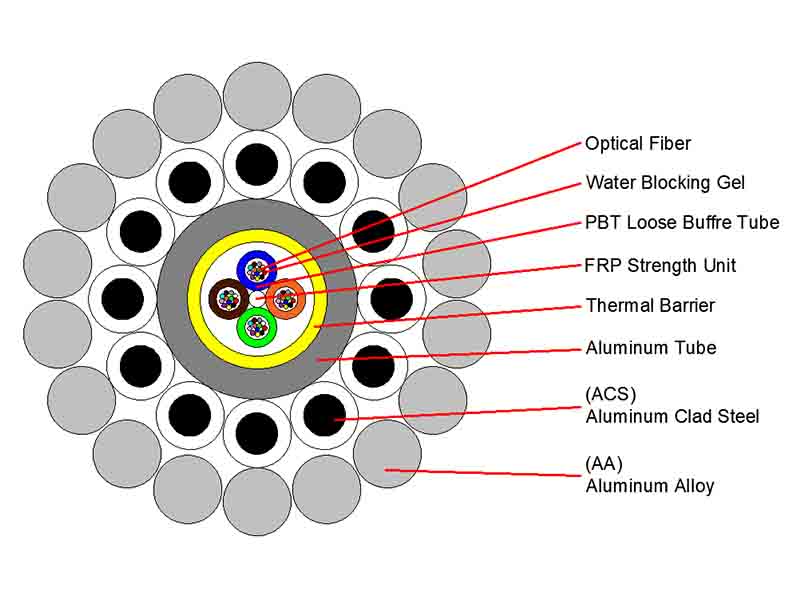
OPGW optical cable standard
(I) Main characteristic parameters of OPGW optical cable
The main characteristic parameters of OPGW optical cable are almost all related to the span of the line tower, sag characteristics, wind load and ice load conditions, suspension points of OPGW optical cable, and allowable tension, which can be summarized as follows:
(1) Number of optical fibers;
(2) Optical fiber type and optical characteristics;
(3) Total outer diameter of OPGW optical cable (mm);
(4) Calculated conductor cross-sectional area (mm2);
(5) Calculated linear mass (kg/km);
(6) Rated breaking force (RTS) (KN);
(7) Elastic modulus (MPa);
(8) Linear expansion coefficient (1/℃ *E-6);
(9) Linear DC resistance (ohm/km);
(10) Maximum allowable operating temperature range (℃);
(11) Short-circuit current capacity (I2t) (KA2·S);
(12) Maximum allowable tension (MAT) (KN).
OPGW optical cables with excellent performance should meet the above requirements. At the same time, in order to have a comprehensive understanding of the characteristics of the OPGW optical cables used and check whether they really meet the requirements of the project, various characteristic tests should be carried out.
(II) Performance test of OPGW optical cable:
There are currently two standards for OPGW optical cable that are widely used internationally. One is the IEC 1396 standard of the International Electrotechnical Commission, “Electrical, Mechanical and Physical Performance Requirements and Test Methods for Optical Fiber Composite Overhead Ground Wires”; the other is the IEEE 1138 standard of the Institute of Electrical and Electronics Engineers of the United States, “Optical Fiber Composite Overhead Ground Wires for Power Lines”. The two standards have their own characteristics. For the convenience of comparison, the performance test requirements of the two standards for OPGW optical cables are listed as follows:
From the table, it can be seen that due to the complete IEC standards, the IEC 1396 standard, in addition to proposing general requirements for OPGW optical cable cabling, the remaining experiments largely reference relevant standards, such as the fiber parameters implemented by IEC 793, without providing specific data, so the operability is not strong, but the description of the structural requirements of OPGW optical cables is more flexible; while the IEEE 1138 standard puts forward particularly detailed regulations on OPGW optical cable components, cabling structure and experiments, and also puts forward very detailed requirements for OPGW optical cable installation tension, on-site acceptance experiments, installation, packaging, etc., so it is more operable, but its structural requirements for OPGW optical cables are more inclined to the structure where the optical unit is placed in the center of the optical cable, and its experimental content also lacks a lightning strike experiment.
Therefore, during the bidding and design process of OPGW optical cable, the implementation of OPGW optical cable standards should be based on the IEEE 1138 standard and supplemented by the IEC 1396 standard, that is, the optical cable type test content should add lightning strike test on the basis of the content specified in IEEE 1138; the optical fiber type test content should be implemented in accordance with the content specified in IEEE 1138; and the optical cable factory inspection content should be selected from the routine test content.
The optical fiber is located in a PBT plastic loose tube, which is covered with a seamless aluminum tube. The aluminum tube is twisted with 1 to 2 layers of monofilaments, which can be all aluminum-clad steel wire or aluminum-clad steel wire and aluminum alloy wire.